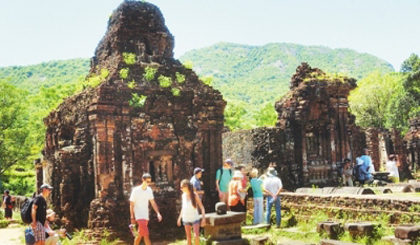India to support My Son heritage site restoration
The Government of India has allocated US$2.5 million to assist Vietnam in restoring and preserving the My Son Sanctuary world cultural heritage site in the central province of Quang Nam, according to the provincial Department of Culture, Sports, and Tourism.
 |
| India has allocated US$2.5 million to support Vietnam in restoring My Son Sanctuary world cultural heritage site. |
India will provide specialists as well as necessary equipment and material for the restoration and preservation efforts.
Meanwhile, the province is projected to spend roughly VND20 billion (US$952,000) on the salaries of 85 workers participating in the efforts over the next five years.
Once the religious and political capital of the Champa Kingdom, My Son Sanctuary is located on a hilly landscape in Duy Phu commune, Duy Xuyen district, about 70 km southwest of Da Nang city and 40 km from Hoi An city.
It comprises eight groups of 71 monuments built throughout the 7th and 13th centuries.
The first construction of My Son dated back to the 4th century under the reign of Bhadravarman for the worship of God Shiva-Bhadresvara. Later on, the temple was destroyed.
At the beginning of the 7th century, King Sambhuvarman had it rebuilt and rebaptised Sambhu-Bhadresvara. Each new monarch came to My Son after his accession to the throne for the ceremony of purification, and to present offerings and erect new monuments, which explains why My Son is the only place where Cham art flourished without interruption from the 7th to 13th century.
The temples in My Son were built in groups that basically followed the same model. Each group was comprised of a main sanctuary (Kalan), surrounded by towers and auxiliary monuments. The Kalan, which is a symbol of Meru Mountain (centre of the universe, where the gods live), is dedicated to Shiva. The small temples are devoted to the spirits of the eight compass points. The towers, topped with tiled covered roofs, were stocked with the offerings and sacred objects of the pilgrims. Cham temples do not have windows, so they are very dark inside. Windows are found only in the towers.
Extensive research and restoration work to preserve the Cham architectural heritage have been carried out since it became a world heritage site in 1999.
(Source: nhandan.org.vn)
 về đầu trang
về đầu trang







